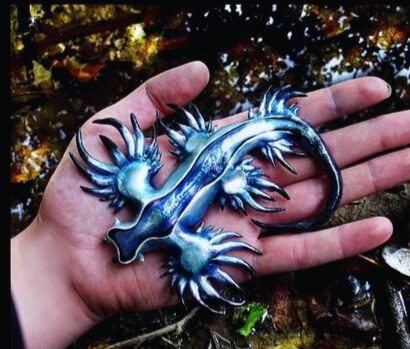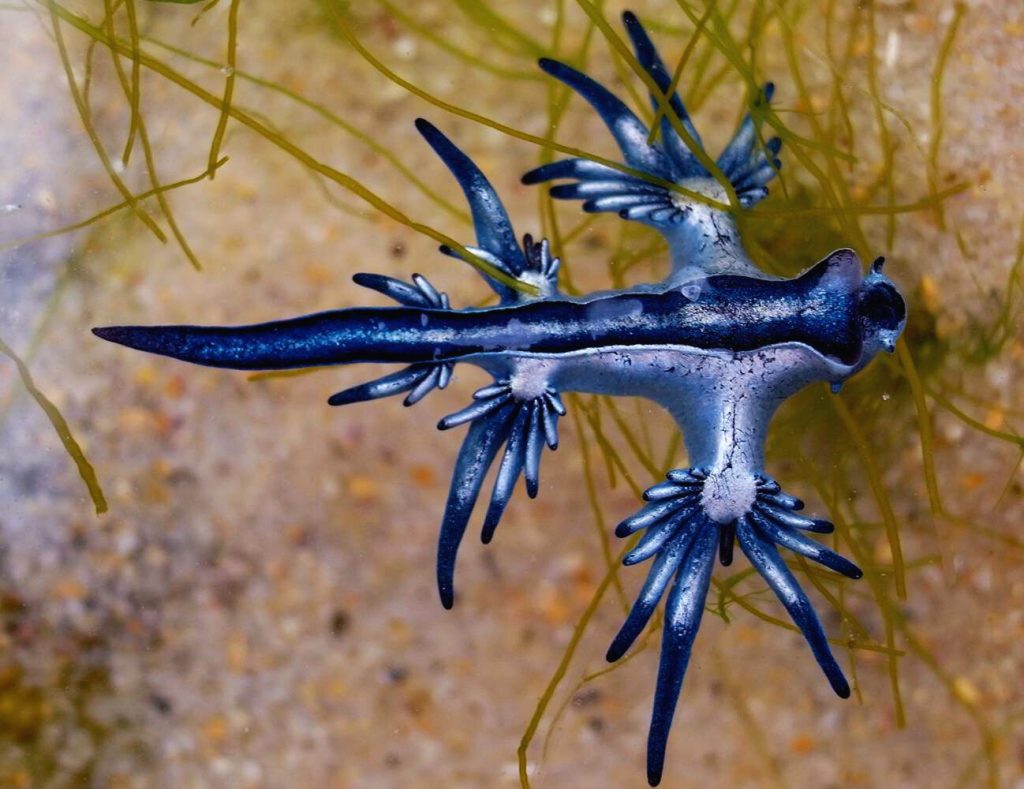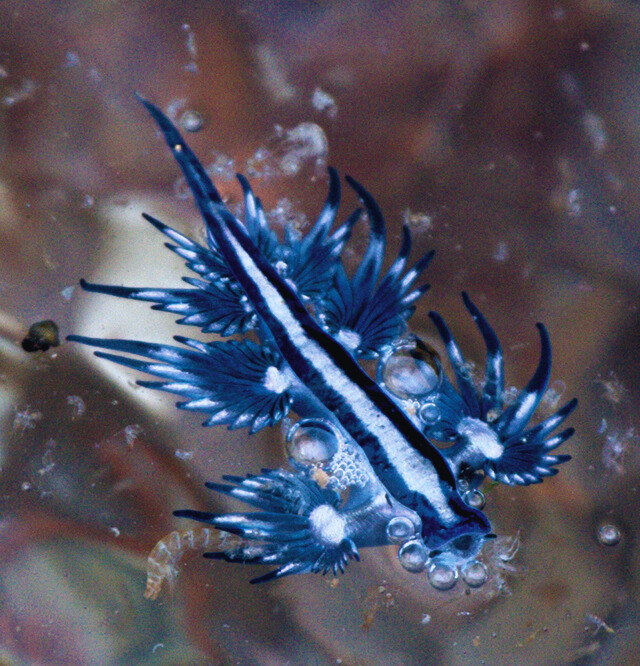Blue Glaucus: The Ocean’s Stunning and Deadly Drifter
The Blue Glaucus, or Glaucus atlanticus, is a small but mighty inhabitant of the ocean. Known for its striking blue hues, this sea slug has earned a variety of nicknames like the blue dragon, sea swallow, and blue angel. But don’t let its angelic appearance fool you; this creature is as deadly as it is beautiful.
Characteristics & Appearance
Weight & Length
Despite its diminutive size, typically reaching up to three centimeters in length and weighing between three to one hundred grams, the Blue Glaucus packs a powerful punch. Its small stature belies a dangerous nature, making it a fascinating study in marine biology.

Physical Characteristics & Color
The Blue Glaucus exhibits countershading, with a silvery grey dorsal side and a ventral area of dark and pale blue, adorned with dark blue stripes on its head. This coloration provides excellent camouflage from predators above and below while floating on the ocean’s surface. The deep blue may also serve as a shield against harmful UV rays.

Lifespan & Reproduction
The Blue Glaucus has a short lifespan, ranging from one month to one year. As hermaphrodites, they produce both eggs and sperm but require mating with another slug for viable egg production. Their reproductive process is as unique as their diet, often laying eggs on the carcasses of their prey.
Habitat
These pelagic creatures are found in the Atlantic, Pacific, and Indian Oceans, living in open waters far from the shore or ocean bottom. They maintain buoyancy by swallowing air bubbles and storing them in a gas-filled sac, allowing the ocean currents and winds to carry them.
Diet
The Blue Glaucus preys on venomous cnidarians like the Portuguese man o’ war, using its rasp-like tongue. Remarkably, it recycles the stinging cells from its prey for its own defense, making it more dangerous to humans than the Portuguese man o’ war itself.
Threats & Predators
The Blue Glaucus faces threats from human activities, climate change, and pollution. Its popularity on the internet has led to a rise in demand for them as exotic pets, which is often detrimental to their survival. Additionally, ocean acidification and pollution pose significant risks to their habitat and food sources.

Fun Facts
A group of Blue Glaucus is known as a “blue fleet.” These creatures have been found in new regions, possibly due to changes in ocean temperatures and storm activity. Interestingly, the venom of the Blue Glaucus remains active even after death, a cautionary note for beachgoers who might encounter them.



